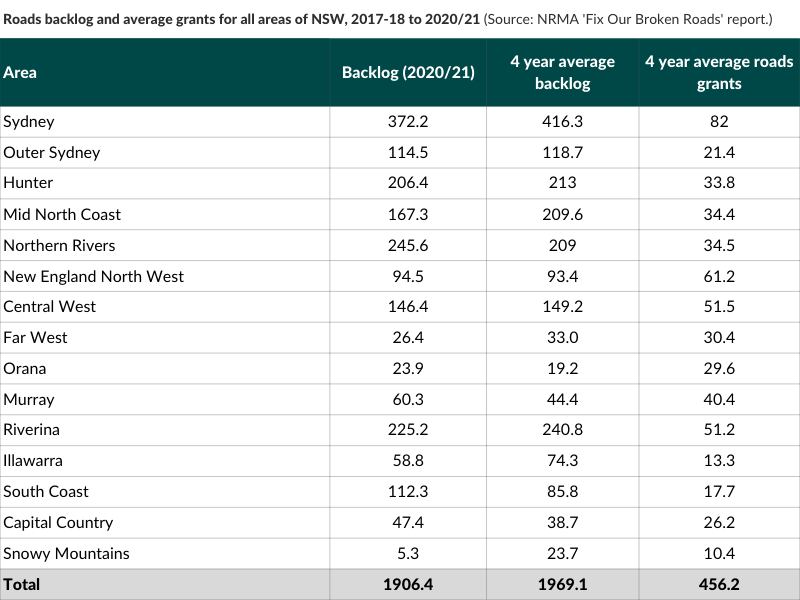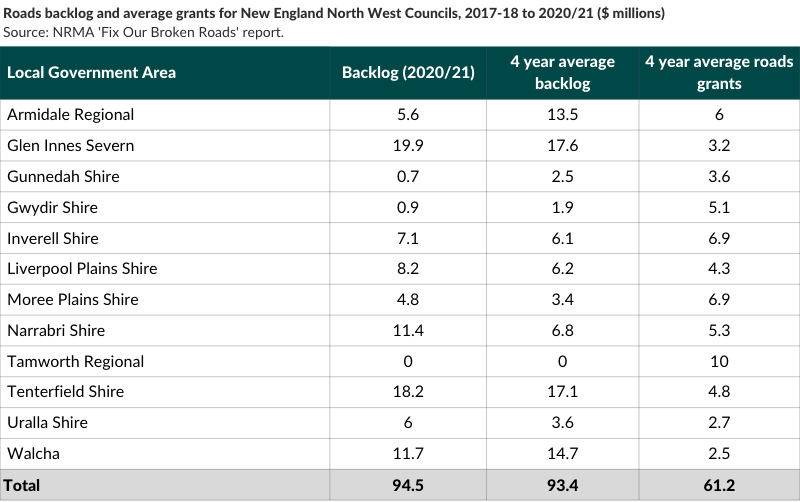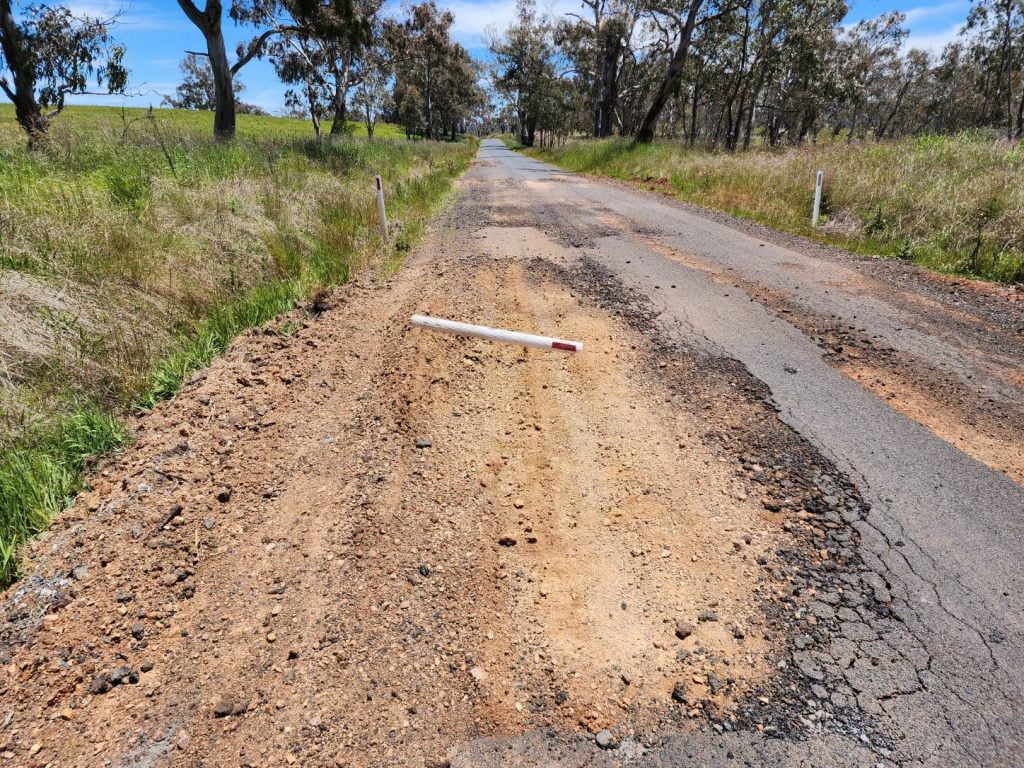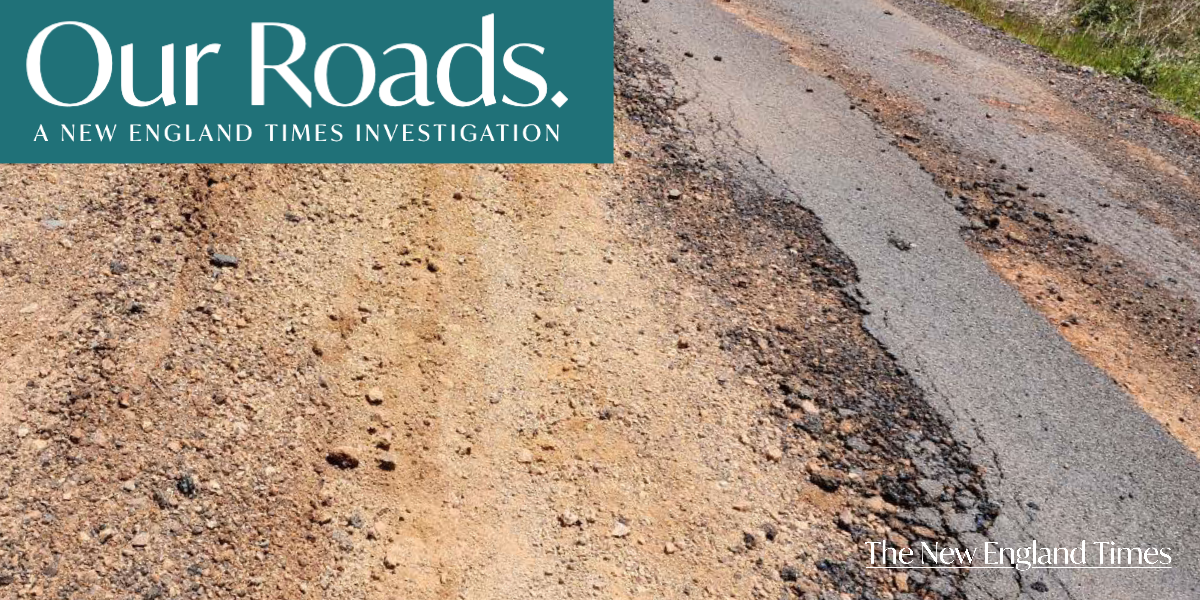In this three part series, the New England Times is having a deeper look at the state of our region’s roads: the repairs needed, whether our councils have the workforce and equipment they need, and whether the hundreds of millions on offer is enough.
It has been nearly two years now that the La Nina weather system has pounded the East Coast of the nation with frequent heavy rains and flooding. While most would greatly prefer it to be a bit wet to the El Nino driven dry, there is no doubt that a much greater proportion of the population is directly affected by flooding events than drought.
While the damage to homes and belongings is devastating for those who suffered heavy flooding, the relentless rain is devastating to our road network, which affects everyone.
When the roads are already in poor condition, adding flooding rains turns them into dangerous goat tracks, riddled with potholes, cracks, and sometimes just washing them away.
And, as no one in the New England needs to be told, regional roads were already in poor condition.
The cost of the poor condition of regional and local roads that are managed by local councils is not incalculable. Half of all accidents in the state happen on council managed roads, and more than two thirds of all road fatalities happen outside of the Sydney metro area. Using the formula Transport for NSW use to figure out ‘willingness to pay’ use to assess the cost of avoiding a fatality, the NRMA calculated that the state of our regional roads costs $3.4 billion a year. That doesn’t include the damage to vehicles or the costs to business from slow and inefficient transport.
Local councils use their asset management system to track the condition of all the roads in their jurisdiction. In these systems they record the roads that are in poor condition and the cost of bringing the road to what they call a ‘satisfactory’ condition. This cost is called the ‘roads backlog’.
The NRMA’s Fix Our Broken Roads report released last month revealed NSW councils already faced a $1.9 billion backlog in 2020/21, that is before the 2022 floods, to maintain roads to a safe standard. $94.3 million of that was in the New England North West. Our neighbouring areas to the east, whose roads New Englanders must use on a regular basis to access health and other essential services, and which were hit by the earlier flooding in 2021, were the worst in the state.

As part of this investigation, we reached out to all of the councils in the New England North West and surrounding areas to ask them about their roads and the repairs required. Most reported millions in repairs that were required before the floods, and a sharp increase since the floods.

Tamworth Regional Council was one of only a small handful of councils that didn’t have a roads backlog in 20/21, but even they are now reeling from the damage and have an apology on their website for the delay in repairing roads caused by three major weather events.
Neighbouring Walcha Council, one of the smallest council areas in the state, says they have an ongoing budget shortfall of $2 million to maintain their roads, meaning their backlog is increasing year on year regardless of the weather events. Aberbaldie Road is just one of their roads that requires significant repair urgently.

Liverpool Plains Shire Council Acting General Manager Nathan Skelly said they have extensive failures along their major roads.
“We will be looking to do heavy patching on Coonabarabran Road and Werris Creek Road.”
“Council has identified in excess of $15m worth of pavement deterioration on our road network over the last 12 months.”
“Council’s backlog on roads is estimated to be sitting at $35 million,” Mr Skelly said, up from $8.2 million in 20/21.
Inverell Shire Council reports a similar damage bill. They estimate the damage caused by the series of minor to major flood events that occurred in the last 12 months will cost $12 million to repair. Their current roads backlog is $19 million, up from $7.1m.
Inverell Shire Councillor Paul Harmon expressed appreciation for the funding, and frustration at the relentlessness of the repair works.
“In the past 12 months, the Shire has experienced 9 separate events that have caused significant damage to our road network.”
“Some roads have been repaired, only to be damaged to a similar extent by a subsequent event,” Councillor Harmon said.
Clarence Valley Council is one of those that has had multiple flood events and suffered significant road damage throughout the area. Clarence Valley Council General Manager Laura Black expressed a similar frustration about the lack of time to repair the road before the next damaging weather event happens.
“The Clarence Valley LGA has faced six natural disaster declaration events since August 2019, leaving little time in between to repair damage to road and community infrastructure,” Ms Black said.
“The February/March 2022 severe weather and flood event and continued rain through to November 2022 exacerbated damage sustained following the three storm and flood events in the prior 14 months.”
“It is now unaffordable for local government and ratepayers to cover the increased repair cost of the compounded damage to road infrastructure,” Ms Black said.
Christ Thomson from Nambucca Valley Council agreed. “We are at a stage where we just fix one road and there is another weather event.”
The heavily flooded Moree Plains Shire Council says they’re still assessing the damage, but expect it to be in the tens of millions.
Last November, Local Government NSW and the Country Mayors Association voted to declare a statewide road emergency.
The declaration was the result of an estimated $2.5 billion in road damages state-wide and a collapse of the local and regional road network. Local councils across the state made an urgent call for the NSW and Federal governments to increase their existing road funding commitments.
The $500 million offered recently by the NSW Government, on top of $50 million here and $20m there, or the usual disaster funding, still doesn’t come close to the $1.9 billion needed before the 2022 floods. Which is why a number of mayors said thank you, that’s a good start, but not enough… and immediately called on the federal Government to match the funds.
Many councils commented to the New England Times that what councils really need is consistent funding, rather than randomly announced grants. The Australian Local Government Association has led the call to rethink how roads are funded, after it was revealed the La Nina pothole bill would top $4 billion nationally.
Money is not the only thing Councils need to fix the roads. In the next instalment of this three-part series we’ll investigate staff and equipment shortages that will hamper road repair work across the region.
Have something to say about this story? Submit your own opinion piece, or quick word, to The Net.

